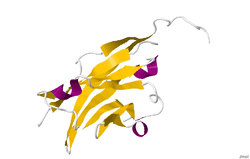
A new study on which a swarm of scientists worked on showed that two children (an 11 year old boy and a 6 year old girl) have a mutation which greatly reduces viral replication in HIV, dengue fever, herpes simplex virus type 2 infection, and hepatitis C – effectively protecting them from the viruses.
The two children are siblings, and their parents are healthy, apparently normal from every point of view. The two children feature a mutation in the gene encoding MOGS – a glycoprotein believed to be important in the process of myelinization of nerves in the central nervous system (CNS).
The thing is, this mutation comes with even more downsides – these two kids have a serious list of problems such as a complex disorder characterized by dysmorphic facial features, generalized hypotonia, seizures, global developmental delay, cerebral atrophy, a small corpus callosum, optic-nerve atrophy, sensorineural hearing loss, hypoplastic genitalia, chronic constipation, and recurrent bone fractures, as well as hypogammaglobulinemia – a type of primary immune deficiency disease characterized by a reduction in all types of gamma globulins. Basically, the disadvantages greatly outweight the advantages.
Researchers write in the paper:
“In summary, the two siblings we describe have a paradoxical clinical phenotype of severe hypogammaglobulinemia and increased resistance to particular viral infections. We evaluated the patients’ immune systems and susceptibility to viral diseases and found an association with a rare MOGS N-glycosylation defect.”
They only reported the findings, not going into additional discussions about the potential benefits of this kind of study. However, it seems pretty clear that finding a way to eliminate all the negative side effects while maintaining the viral resistance could have massive implications – though that’s pretty far away. A drug working on the same mechanism called miglustat was developed in the ’90’s for HIV treatment, but the side effects were still significant.
Scientific Reference.
Was this helpful?



